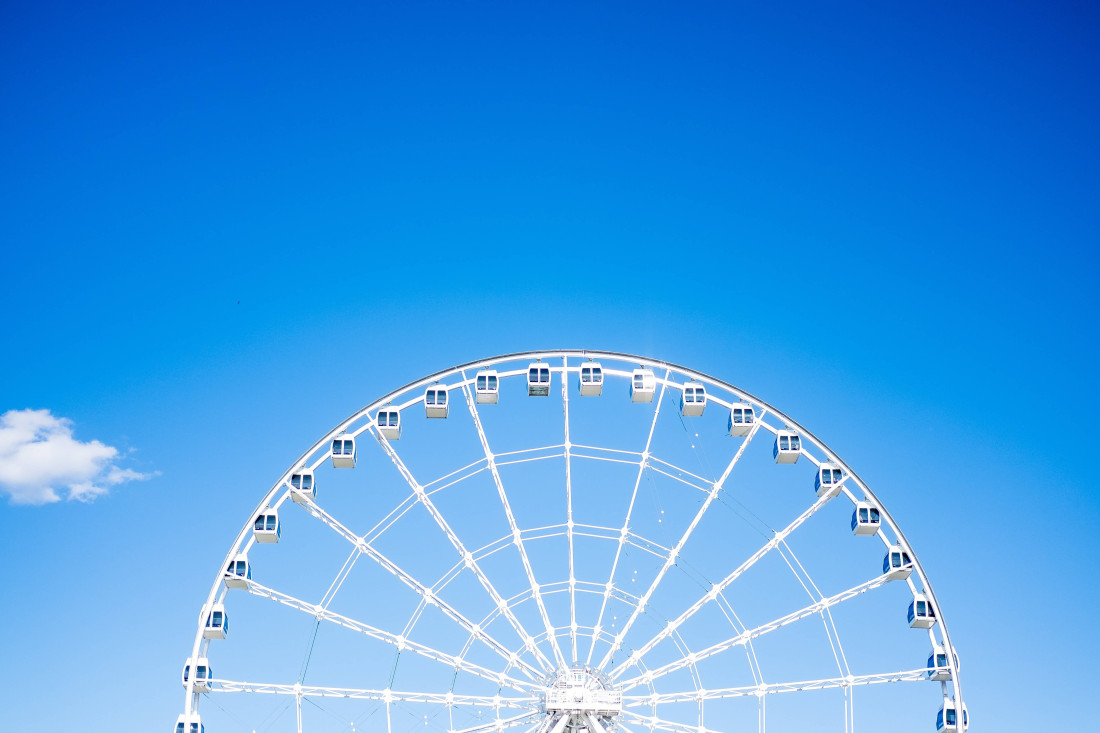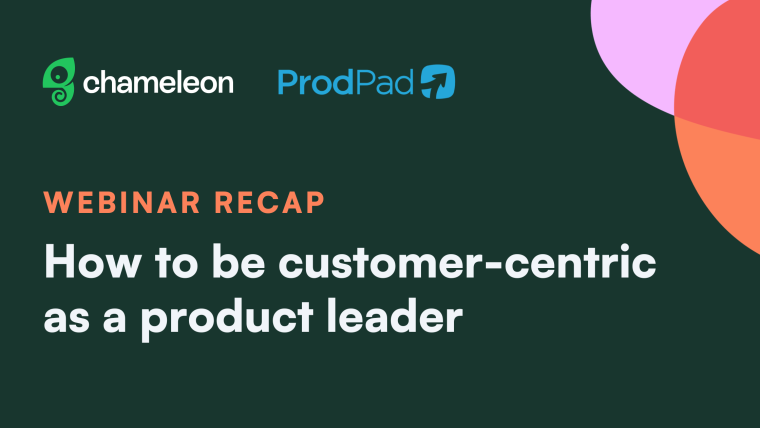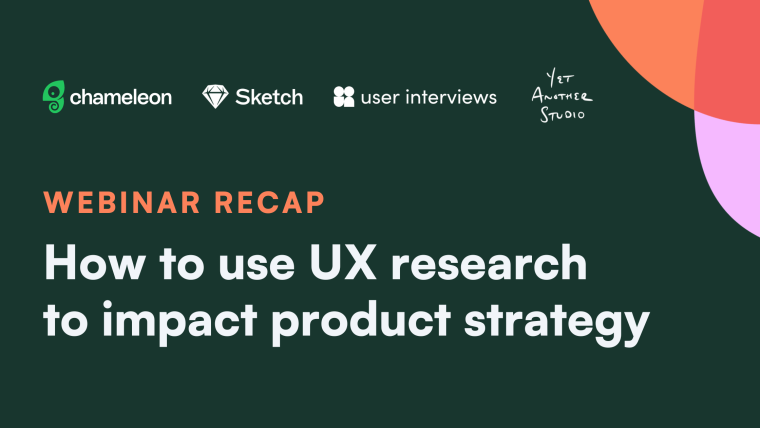As the saying goes, ‘The journey of a thousand miles begins with one step'. Fortunately, the customer lifecycle journey doesn't consist of a thousand miles. But it does require work and effort to get the customer to the desired destination, which is when they find value in your product and, ultimately, commit to a purchase.
So what does it take to bring your users from that one step they begin with, to the next, and then the next, until they are ready to commit?
To answer this question, our Head of Marketing, Kirsty Finlayson, got together in conversation with George Chasiotis, Managing Director at Minuttia. Here’s a hint: it’s all about tailoring your customer engagement efforts to each stage of the customer journey. Let’s hit the road!
The customer lifecycle journey is the path a customer takes from first being introduced to the product, all the way to when they become a product evangelist.
There are six stages to the customer journey: acquisition, activation, retention, revenue, re-engagement, and loyalty.
The acquisition stage is divided into five sub-stages: unaware, problem aware, solution aware, product aware, and most aware.
Each stage requires its own distinct approach when it comes to content creation to engage and retain customers.
Customize your content and engagement strategy at each stage of the journey to successfully move customers from one stage to the next.
What is the customer lifecycle journey?
The customer lifecycle journey is the path a customer takes from first being introduced to the product, all the way to when they become a product evangelist.
Each stage of this journey is unique in terms of what the customer is looking for and what they need. Thus, it’s important for product marketers to understand how to move customers from one stage to the next.

It's the circle of (customer) life
As shown above, the typical B2B buying journey goes around like the circle of life. As Kirsty Finlayson points out, once a customer goes around the cycle, it doesn’t mean that they’re done. They can be re-entered into the cycle, such as being prompted for upsells or upgrades.
Why you must tailor engagement at each stage of the customer journey map
Now you might look at this and think, ‘well we’ll just blast content across this entire cycle.’ Sorry to tell you, but it’s not as simple as that.
According to Power Digital Marketing, 76% of B2B buyers prefer to receive content unique to their buying stage. What’s more is that leads nurtured with targeted content produce an increase in sales opportunities of more than 20%.
This means that it’s not enough to just engage your customers with content. You have to serve them the right content that is customized for the particular conditions around each stage.
So let’s go through the stages of the customer lifecycle journey and figure out what exactly you need to do in each of them.
Acquisition stage
This is where it all kicks off with the B2B customer journey. The acquisition stage is when people get drawn into the product’s marketing channels, whether it’s organic or paid.
Acquisition is the first step towards filling up the marketing and sales funnel that will eventually lead to conversion, which is why this is one of the most important stages in the customer lifecycle journey.
The sub-stages of the acquisition stage
According to George Chasiotis, this stage consists of five sub-stages:

1. Unaware
In the beginning, customers are unaware. Specifically, they are unaware that they have a problem. You can’t solve what you don’t know.
2. Problem aware
Then we have the step where people become problem aware. This is when customers realize that they do have a problem, and know that they need to solve this. It is unclear what the solution could be, but at least the problem is known and they can start to figure out how to solve this.
3. Solution aware
After that comes solution awareness, which is when customers know that a solution exists to the problem they have. Of course, this does not mean that the customer knows which product to exactly buy.
4. Product aware
Once the customer is product aware, they have now arrived at a specific product. Still, there’s much investigation that goes into the product from the customer’s side in order to find out that they are 100% sure this is the right solution.
5. Most aware
When they are finally certain that this product is the one for them, they are now most aware. This is the fabled place in the customer's journey where they've reached a place of enlightenment regarding your product and are ready to move to the next step.
Common mistakes during the acquisition stage
George outlines several mistakes commonly found in a company’s customer acquisition strategy.
In particular, he emphasizes that not every page has to work toward conversion and that each stage needs a tailored approach that is purposeful and appropriate.
At the same time, George also brings up the importance of not just paying attention to the final stages of the acquisition process where companies think conversion typically happens, and that the customer decision journey takes time and effort, especially for B2B buyers.
Another key mistake he mentions is not having enough customer touch points. Potential customers can come through a blog post, a Slack community, or from anywhere else, so it's critical to build an omni-channel campaign to have as many touch points as possible.
Content types for the acquisition stage
Not all content is the same, and different content should target distinct lifecycle stages within the acquisition phase. More specifically, George mentions that there are three main types of content fit for the acquisition stage. They are product-focused, SEO, and original. We’ll dig deeper into each below.
1. Product-focused content
Let’s say you have users who are now product aware. They are ready to explore the product’s benefits and see if this is the right solution for them. This is when you should hit them with product-focused content. These are content pieces that are all about the product such as product updates, help centers, customer stories, case studies, how-to guides, and more.
Essentially, this is content that gives a deeper understanding of the product to the customer, allowing them to see the benefit of the product more clearly.
2. SEO-based content
For marketers, SEO content is a classic inbound marketing ploy, and as an SEO expert, George shows us how versatile SEO content can be.
For instance, If they are unaware or problem aware, you can use informational content to draw people who are looking for solutions or have questions about problems that they may have.
Then you can have solutions-focused content, such as posts that list various products and engage people at the solution-aware stage to make them acquainted with your own product.
At the product awareness stage, you can accentuate how you compare to an alternative solution by creating comparison posts. That way you can engage customers who have narrowed their options down to between you and several others, and take that opportunity to stand out.
3. Original content
To George, most SaaS companies tend to focus solely on SEO and product-focused content, but this means that they miss out on what Minuttia calls original content.
Original content includes surveys, data-based storytelling, personal storytelling, and other content that draws from the unique experience and capacities of the company and its team members.
This sort of content connects to users from a more human point of view that isn’t as rigid as SEO-based or product-focused content can be. This can also capture customers at various points of their journey, including the unaware and the problem aware stages because such content doesn't necessarily need to be about the product at hand.
Below is a nifty summary of the above-mentioned content types.

Activation stage
After acquisition comes activation. This is when your users sign up for the product. They are motivated, and they are ready to try your solution. In fact, this is when they have peak motivation, and it’s important that you allow them to channel that energy into the right places by engaging them with the appropriate content.
For instance, activation flows usually involve welcome messages via email. This is a great place to nudge them into taking action and direct them towards key features that facilitate adoption.
Welcome tours are also a great way to introduce all the product features that the potential customer may find valuable. However, Kirsty advises that visitors are given the option to drop out of the tour if they want to look around on their own accord.
Product tours can be a part of different in-app communications, such as tours that help with onboarding, a live chat that gives users instant support, and in-app widgets that serve up relevant help documents and resources. This way, users are motivated to continue their journey and try the product without blockages.
Retention stage
Now that users have been activated and they’re getting further into their journey of your product, the question becomes, ‘how do we keep them around?’
Customers are now in the doors, and they’re getting closer to committing. This is the moment to serve something up that would give them assurance that this is the right product for them. As Kirsty mentions, what you do here needs to be “hyper-specific.”
Perhaps you can serve up a case study of success for a customer who has been using your tool for a year. Or show feature-specific content where they can see deeper value with the product like webinars and blog articles.
Aside from in-app engagement, segmentation via email could be an effective way to deliver content that is differentiated for each type of customer action.
Curious to know more about using lifecycle segments to convert and retain users? Chameleon's CEO and Co-Founder, Pulkit Agrawal, got together with Jane Portman, Co-Founder of Userlist, to discuss this topic. Watch the webinar recording right here 👇
Revenue stage
Then we come to revenue. This is the point we’ve been waiting for, the part where people decide to exchange money for your product. So, what can we do in order to make customers finally open up their budgets?
This is where a human touch really helps. For example, inviting users to demos to show off the product first-hand is a great way to move customers toward purchase. Another is highlighting paid features within the app, letting customers know that they can get all of this great value.
Once again, case studies can work wonders in this stage as well. Show off your most satisfied customers who have been on a higher-tier plan for some time, and have been achieving remarkable success. For example, you can use Chameleon to deliver that content in-app through a Launcher that pops up from the side or through a modal.
Social media can play a key role here as well. You can run paid retargeting ads or use social media videos to highlight features that drive purchases. This way, social media campaigns can work their magic not just in the acquisition stage, but also further down the funnel.
Lastly, the email is back yet again. Through a segmented approach, you can target customers in the revenue stage and give them a nudge through email. This way, if they don’t engage with your in-app content, there’s another opportunity through their inboxes.
Re-engagement stage
Now that you’ve got their business in the bag, the work is finally done, right? Not so fast. The customer's experience with your product has barely begun, so this is where you need to reaffirm your customer's decision and consolidate their commitment to your product. You can do this by re-engaging your customer.
To start with, emails and calls that give personalized offers to customers can be a great added value. You can also get pretty creative with this as much as you want. It could be an in-person event or extra support for users who need it. The key here is to make users feel special and that they are being appreciated, and there’s nothing better than putting in a human touch.
“People make people feel really, really special.”
– Kirsty Finlayson, Head of Marketing at Chameleon
Loyalty stage
We all want loyal customers. These are users who re-enter the customer lifecycle and are interested to do more business with you. Not only that, they can become your brand advocates and gain you more customers.
So this is where you need to talk to them, understand their experience, and discover how they’re using your product to be able to know what actions to take to keep their business with you. The best way to do this is to engage them within your product.
This is where continuous user feedback can truly shine. As Kirsty points out, in-app surveys have around a 60% response rate, which is much higher than what typical NPS surveys or customer satisfaction surveys would get through email.
Therefore, collecting feedback in-product and leveraging those insights is a great way to drive loyalty.

If the feedback comes back positive, that's a thumbs-up, and you can nudge them towards leaving a review score on sites like G2 in exchange for a small token of appreciation.
If the feedback comes back negative, then you can always direct them to a call with your customer support team. The important thing here is to show that you’re committed to delivering customer success.
Outside of your product, social media can also be a useful tool for loyalty. Giving shout-outs to your customers whenever they have wins like a fundraising round or a great offsite, can offer that nice human touch to the relationship between you and your customers.
Interestingly, both Kirsty and George praise the power of branded swag to boost customer loyalty. It could be a T-shirt, a cap, a canvas bag, or a mug. You can show it around to others, take pictures of it, and share it on social media. Besides improving customer loyalty, branded swag can also become a great everyday reminder of the brand for the customer and everyone around them.
Building your customer engagement tech stack
So now that you know how to engage customers in their lifecycle journey and facilitate SaaS customer success, what’s the best way to do this?
The easy answer is to build a tech stack that makes it simple for you to manage the customer lifecycle journey. Here’s a sample stack that tackles all of the above.

Keep that cycle rolling
The big takeaway is this: remember that each stage of the customer journey requires its own distinct approach when you engage customers. This is why your content has to be adjusted carefully according to where the customer is in their journey.
George from Minuttia shares these final tips:
The stage for which you create content matters
Your efforts should be consistent across all different content types and formats
Some content types and formats have an indirect effect on the outcome
Maintain quality and brand integrity at every stage of the customer journey
Focus on how to keep your customers going from one stage to the next, and offer a personalized experience at each step of the customer lifecycle map.
Remember, it’s about the journey, not the destination.







